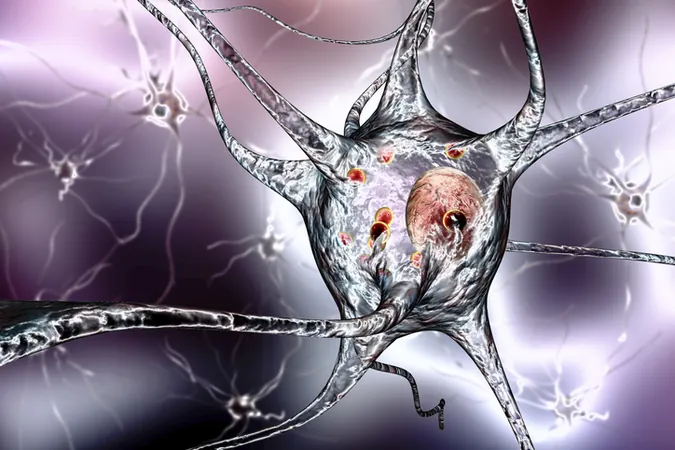
Breaking Discovery: Parkinson's Lewy Bodies Successfully Formed in Human Neurons!
2024-10-09
Author: Yu
Groundbreaking Study on Parkinson's Disease
A groundbreaking study has made a significant leap in understanding Parkinson’s disease (PD), shedding light on the mysterious formation of Lewy bodies, a key pathological feature of the disease. Traditionally identified only during autopsies, researchers can now observe Lewy body formation in living human neurons. This revolutionary work was conducted by a team at The Neuro, part of McGill University, alongside the Early Drug Discovery Unit.
Research Findings Published in Nature Neuroscience
Published in *Nature Neuroscience*, the research reveals that Lewy bodies, which are enriched with a protein called alpha-synuclein, are not just simple accumulations of misfolded proteins as previously thought. Instead, they form when dopaminergic neurons—the very type of cell that is severely impacted in Parkinson’s—are subjected to both an increase in alpha-synuclein and an immune response.
Significance of the Findings
Dr. Peter McPherson, a leading researcher on the project, stated, "Replicating Lewy body formation in living neurons is a significant step forward to understanding key aspects of Parkinson's and other neurological diseases. These neurons came from stem cells of healthy individuals, suggesting that anyone might be at risk of developing Parkinson's given the right environmental factors, thereby challenging the belief that genetic predisposition is a prerequisite."
Methodology of the Study
The team employed induced pluripotent stem cells (iPSCs) to recreate this complex process, demonstrating that Lewy bodies in dopaminergic neurons develop only in the context of both immune stimulation—triggered by cytokines such as interferon-gamma or interleukin-1 beta—and the presence of alpha-synuclein fibrils.
Implications for Future Research
This finding opens new avenues for research, as previously, studying Lewy bodies in human cells was nearly impossible due to the rapid degradation of cells after death. By using live, human-derived neurons, the scientists could track the real-time progression of Lewy body formation, revealing not only their characteristics but also the crucial role of immune dysfunction.
Observations on Immune Response and Autophagy
Moreover, it was observed that the immune response led to impaired autophagy in these neurons, indicating a complex interplay between the immune system and neurological health. Contrarily, attempts to replicate Lewy body formation in other types of neurons, such as cortical cells, failed, underscoring the specificity of this phenomenon to dopaminergic neurons.
Potential for Drug Development
This study not only enhances our understanding of Lewy body dynamics but also paves the way for future drug development aimed at intervening in the early stages of Parkinson’s disease. Armin Bayati, a PhD candidate and co-author, emphasized the importance of future research in investigating how systemic inflammation contributes to Lewy body formation alongside alpha-synuclein.
Broader Implications for Neurological Disorders
The implications of this study could reach far beyond Parkinson's alone, with potential impacts on a myriad of neurological disorders where Lewy bodies or similar aggregates are present. As researchers push the boundaries of neuroscience, we may be closer than ever to discovering not just how these debilitating conditions arise, but how to effectively combat and potentially prevent them altogether!


 Brasil (PT)
Brasil (PT)
 Canada (EN)
Canada (EN)
 Chile (ES)
Chile (ES)
 España (ES)
España (ES)
 France (FR)
France (FR)
 Hong Kong (EN)
Hong Kong (EN)
 Italia (IT)
Italia (IT)
 日本 (JA)
日本 (JA)
 Magyarország (HU)
Magyarország (HU)
 Norge (NO)
Norge (NO)
 Polska (PL)
Polska (PL)
 Schweiz (DE)
Schweiz (DE)
 Singapore (EN)
Singapore (EN)
 Sverige (SV)
Sverige (SV)
 Suomi (FI)
Suomi (FI)
 Türkiye (TR)
Türkiye (TR)